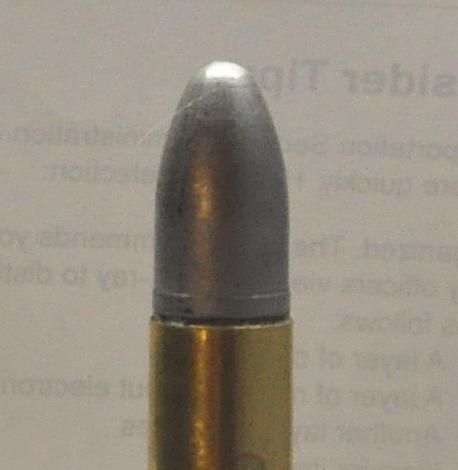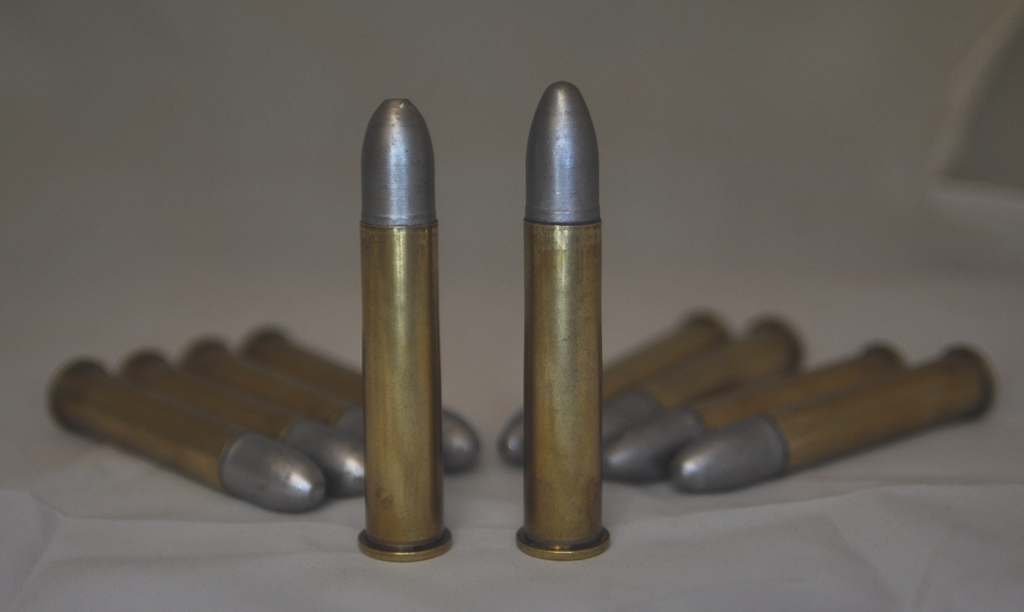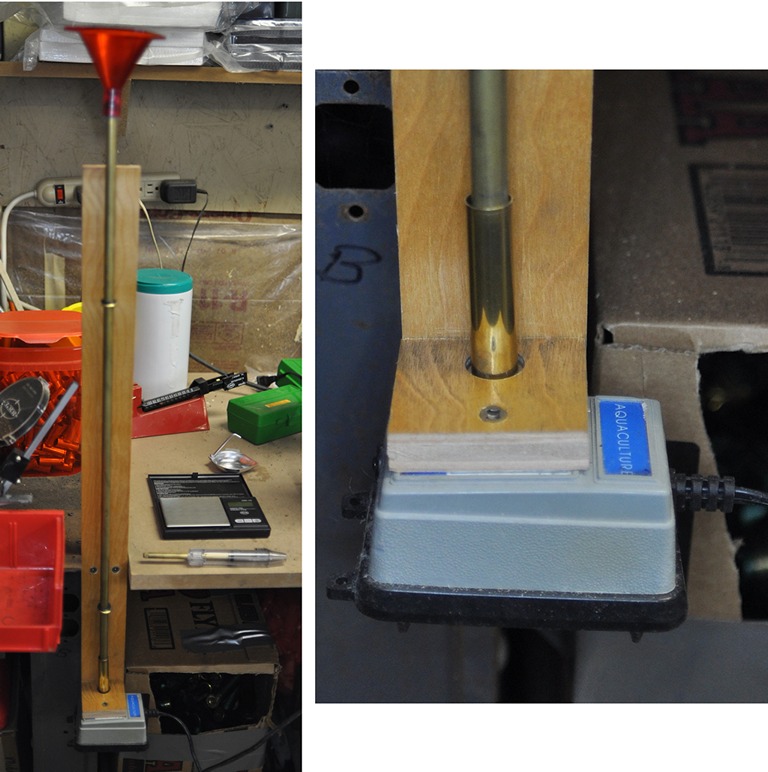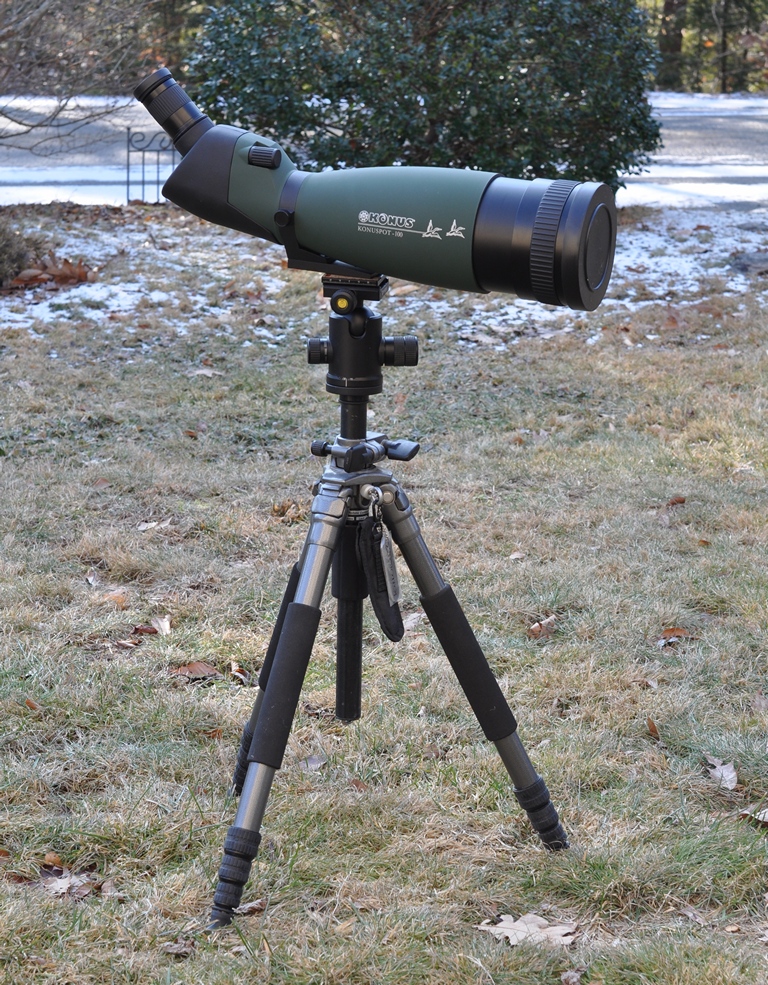UPDATE 1/28/2012

I received my new bullets but haven’t shot them yet. The Postell’s measure a diameter in front of the driving band of .446-7 (old bullet was .4515) so they slid in right up to the driving band.
I used the following procedure to determine Extended COAL of Loaded Round
• Drop the bullet into the chamber and tap the base with the eraser of a pencil
• Using a caliper, measure from the base of the seated bullet to the rim of the chamber (A)
• Measure the length of the bullet…B
• A + B = C C = Extended COAL of the round
• Determine seated depth of the bullet in the case (D) by subtracting the case length E from C resulting in F and then subtracting A from F.
So E-C=F and then A-F=D
A = 1.518
B = 1.417
C = 2.935 COAL
D = .582
E=2.1″ (for 45-70)
F = .835″
70gr KIK 2f = .118 compression at max COAL
The loaded round is at the right.
The Saeco 645 measures out to
a = 1.612
B = 1.244
C = 2.856
D = .488
70gr KIK 2f compression = .021 at max COAL
Here are the Saeco 645, 480gr bullet (left) and the Lyman Postell, 535gr bullet (right) loaded over 70 gr of 2f KIK (by weight). Both bullets are seated to achieve a COAL of about .020 under the max COAL for each bullet.
As long as we’re talking about the bullets here’s my Drop Tube w/vibration to help settle the powder. The tube is made from 3/8″ diameter brass tubing cut to 24″ in length and fitted a Lee funnel to the top. I then ripped some scrap 1/2″ plywood to make the stand and attached the tube using some brass cup hooks that I bent to create an eye bolt. A couple of o-rings are used to set the height of the tube. I then took a $5 Wal-Mart aquarium pump and screwed it to the base of the drop tube. The pump when plugged in provides a good amount of vibration.
My method for loading this case is to fill up the powder measure with a Lee dipper and drop it into my drop tube. The powder get’s vibrated until I get another load ready at which time I take the case off the drop tube and insert a card wad.
After that I place another case on the tube and repeat. I give each case about the same amount of time for vibration using the process of filling the measure as the gauge.
By the way, that’s a Thompson Center U-View plastic powder measure sitting in front of the digital scale at right. I found that it will drop within +/- 0.1 grain so I don’t have to use the scale for weighing the powder except for determining the initial charge size. The volumetric measure of the powder measure is about 5 grains higher than the actual weight of the KIK powder I’m using. (75gr on the measure is about 70gr by weight).
Next I needed a scope because it was painful shooting in my back yard and walking 240′ each way after every shot to see where it hit. One can easily spend more for a scope than you spent on the gun and I certainly wasn’t going to do that. My rational was that I will need a scope for 100-300 yards which are the longest ranges I will have to shoot locally. If I every go to a match I’m sure there will be spotters available with better scopes if needed. So I did some internet research and settled on the Konus Konuspot-100 4.0″/100mm Spotting Scope Kit and purchased it from BH Photo because they had the least expensive price by about $75 of anyone and I’ve done plenty of business with them in the past.
 The Picture at right shows the Konus 100 sitting on a Giottos tripod and ball head. That is a professional grade photo tripod which will work great with the spotting scope. I tried the Konus at about 150 yards and could see the splatter target like it was right in front of me so provided the optics don’t fall off drastically I should easily be able to see the hits on the splatter target at 300 yards. The paper target (see the targets pictured above) was more difficult because the bullet holes were black on black. I saw the hole in the white fine but could barely make out the holes on the black though I could easily see the break in the white ring between 7 and 8. So far I’m pretty happy with the purchase.
The Picture at right shows the Konus 100 sitting on a Giottos tripod and ball head. That is a professional grade photo tripod which will work great with the spotting scope. I tried the Konus at about 150 yards and could see the splatter target like it was right in front of me so provided the optics don’t fall off drastically I should easily be able to see the hits on the splatter target at 300 yards. The paper target (see the targets pictured above) was more difficult because the bullet holes were black on black. I saw the hole in the white fine but could barely make out the holes on the black though I could easily see the break in the white ring between 7 and 8. So far I’m pretty happy with the purchase.
